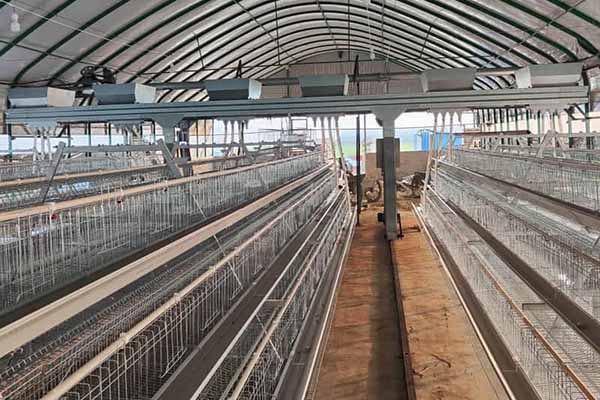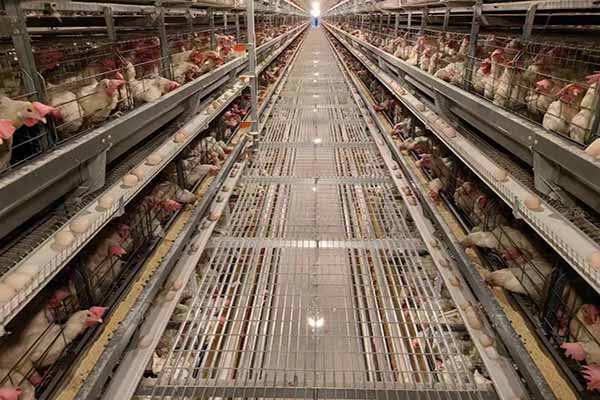How to Start a Chicken Farm in California: A Comprehensive Guide
Time : 2025-07-01
Starting a chicken farm in California can be a rewarding endeavor, providing fresh eggs, organic meat, and contributing to the local food economy. This guide will walk you through the essential steps and considerations for establishing a successful chicken farm in the Golden State.
1. Market Research and Planning
Before you set up a chicken farm, it’s crucial to conduct thorough market research to understand the demand for poultry products in your area. Here are some key points to consider:
- Identify your target market: Determine whether you want to focus on eggs, meat, or both. Also, consider if you will sell to consumers directly, through a grocery store, or to a foodservice provider.
- Competitor analysis: Research existing chicken farms and understand their strengths, weaknesses, and offerings. This will help you position your farm effectively.
- Develop a business plan: Outline your farm’s objectives, strategies, and financial projections. A well-thought-out plan will be essential for securing financing and guiding your operations.
2. Legal and Regulatory Compliance
Compliance with local, state, and federal regulations is critical for the successful operation of a chicken farm in California. Here’s what you need to know:
- Permits and licenses: Obtain the necessary permits and licenses, including a conditional use permit from your local government, and any specific permits for farming activities.
- Animal welfare: Adhere to California’s stringent animal welfare laws and regulations. This includes providing appropriate housing, nutrition, and veterinary care for your chickens.
- Environmental regulations: Ensure that your farm complies with environmental regulations regarding waste management and air and water quality.
3. Site Selection and Infrastructure
Selecting the right location for your chicken farm is crucial for its success. Consider the following factors:

- Accessibility: Choose a site that is easily accessible to suppliers, customers, and employees.
- Size: The size of your farm will depend on your business plan and the number of chickens you intend to raise. Ensure you have enough space for chicken coops, equipment, and storage.
- Climate and environment: Consider the climate and environmental conditions of the area. In California, you may need to account for extreme temperatures and drought conditions.
- Infrastructure: Install the necessary infrastructure, such as water supply, electricity, and waste management systems. Investing in quality equipment like poultry feeders and waterers is crucial for efficient operation.
4. Chicken Breeds and Management
Choosing the right chicken breeds and implementing effective management practices are vital for a successful chicken farm. Here’s what to consider:
- Breed selection: Select chicken breeds that are well-suited to your climate, available market, and intended use (laying or meat). Some popular breeds in California include Ameraucana, California Grey, and California White Leghorn.
- Housing: Design chicken coops that provide adequate space, protection from predators, and proper ventilation. Use high-quality chicken coop doors and nesting boxes.
- Nutrition: Provide a balanced diet to ensure your chickens’ health and productivity. Invest in automated poultry feeders to ensure consistent feed delivery.
- Health management: Implement a vaccination and health monitoring program to prevent diseases. Consider purchasing advanced poultry disease detection systems for early detection.
5. Financial Planning and Funding
Starting a chicken farm requires a significant financial investment. Here are some tips for managing your finances:

- Budgeting: Create a detailed budget that includes startup costs, operating expenses, and profit projections.
- Financing: Explore various financing options, such as loans, grants, and equity investments. Consider seeking professional financial advice to optimize your funding strategy.
- Cost savings: Identify areas where you can cut costs without compromising quality, such as purchasing used equipment or implementing energy-efficient solutions.
6. Marketing and Sales Strategy
Developing a strong marketing and sales strategy is essential to reach your target market and ensure a steady income:
- Brand identity: Create a compelling brand identity that resonates with your customers. This may include a unique farm name, logo, and packaging design.
- Marketing channels: Utilize various marketing channels, such as social media, farmers’ markets, and direct sales to customers. Consider working with local businesses to expand your reach.
- Customer loyalty: Implement programs that encourage customer loyalty, such as loyalty cards or discounts for repeat customers.
7. Ongoing Management and Growth
Managing your chicken farm effectively and continuously seeking opportunities for growth are key to long-term success:
- Continuous improvement: Regularly assess your farm’s performance and seek ways to improve efficiency, reduce costs, and enhance the quality of your products.
- Training and development: Invest in training for yourself and your employees to stay updated on the latest farming techniques and technologies.
- Adaptability: Be prepared to adapt to changing market trends, regulatory requirements, and other external factors that may impact your farm.
Conclusion
Starting a chicken farm in California can be a challenging but rewarding endeavor. By following these steps and staying informed about the latest industry trends and technologies, you can establish a successful and sustainable farm. Remember, perseverance, hard work, and a passion for farming are essential ingredients for your success.












